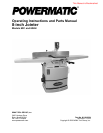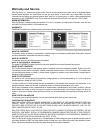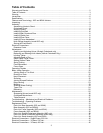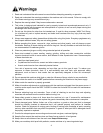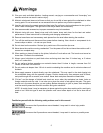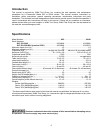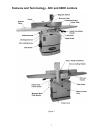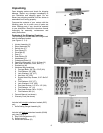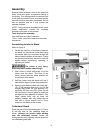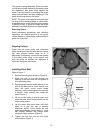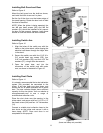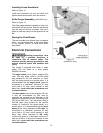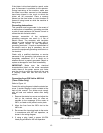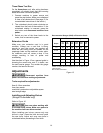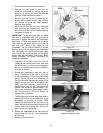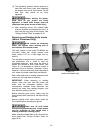
5
21. Give your work undivided attention. Looking around, carrying on a conversation and “horse-play” are
careless acts that can result in serious injury.
22. Maintain a balanced stance at all times so that you do not fall or lean against the cutterhead or other
moving parts. Do not overreach or use excessive force to perform any machine operation.
23. Use the right tool at the correct speed and feed rate. Do not force a tool or attachment to do a job for
which it was not designed. The right tool will do the job better and more safely.
24. Use recommended accessories; improper accessories may be hazardous.
25. Maintain tools with care. Keep knives and knife inserts sharp and clean for the best and safest
performance. Follow instructions for lubricating and changing accessories.
26. Remove loose items and unnecessary work pieces from the area before starting the machine.
27. Turn off the machine and disconnect from power before cleaning. Use a brush or compressed air to
remove chips or debris — do not use your hands.
28. Do not stand on the machine. Serious injury could occur if the machine tips over.
29. Never leave the machine running unattended. Turn the power off and do not leave the machine until it
comes to a complete stop.
30. When working a piece of wood on the jointer, follow the 3-inch radius rule: The hands must never be
closer than 3 inches to the cutterhead.
31. Always use a hold-down or push block when surfacing stock less than 12 inches long, or 3 inches
wide, or 3 inches thick.
32. Do not perform jointing operations on material shorter than 8 inches in length, narrower than 3/4
inches, or less than 1/4 inch thick.
33. Do not make cuts deeper than 1/8 inch to avoid overloading the machine and to minimize chance of
kickback.
34. Never apply pressure to stock directly over the cutterhead. This may result in the stock tipping into
the cutterhead along with the operator’s fingers. Position hands away from extreme ends of stock,
and push through with a smooth, even motion. Never back workpiece toward the infeed table.
35. “Pull-out” and the danger of kicked back stock can occur when the workpiece has knots, holes or
foreign materials such as nails. It can also occur when the stock is fed against the grain. The grain
should run in the same direction you are cutting. Before attempting to joint or plane, each workpiece
must be carefully examined for stock condition and grain orientation.
NOTE: At certain times it may be necessary to plane against the grain when working with a swirl grain
wood or burl. With this type of work the operator must use a lesser depth of cut and a slow rate of
feed.
Familiarize yourself with the following safety notices used in this manual:
This means that if precautions are not heeded, it may result in minor injury and/or
possible machine damage.
This means that if precautions are not heeded, it may result in serious or possibly even
fatal injury.



